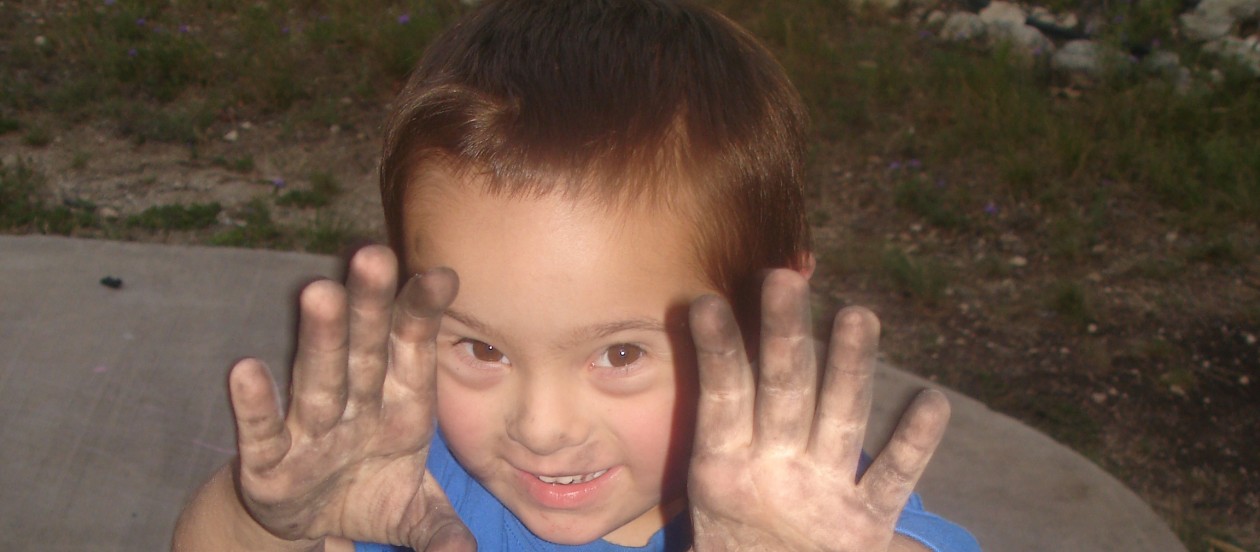Noah’s receptive language is great; Noah’s ability to make sounds is good, Noah’s use of speech in daily life – not so good.
In my experience with Noah, his confidence in his speech is key to him using his speech in daily life. Because of Noah’s apraxia symptoms it takes lots of PROMPT-ing and lots of drill to program in the words we expect him to recall and use later on. Drilling has negative connotations in speech therapy sometimes because of its lack of emphasis on language and context, but for kids like Noah who have motor planning issues, drilling is appropriate.
We’ve been working on two-word phrases with Noah for the past three years, and we’re just now seeing him put two words together on his own in contexts other than “more (juice) “ or ” (ball) please” verbally. Before now, we would have to model one word at a time and he would repeat one word at a time.
It’s exciting to be moving on from that, and I’ve made three pages of two-word phrase flashcards to share. The first word in each is blue – Noah’s favorite color to speak. The second words are words that Noah has learned to speak. The first three pages of the file are those flashcards. To use them the way I did, cut them in pairs; in other words, blue/boot should be one card, blue/truck should be another card. The last five pages of the file have two picture cards on each page. Cut each of those picture cards out individually.
Two-Word Phrases Blue 02-03-13
Depending on where your child is cognitively and with his speech, you may want to only work on the two-picture cards for a while and just use them as flash cards and visual prompts. This is where I started with Noah. I would show him a two-picture card and point to blue and say “blue.” He would repeat. Next, I would point and say the name of the second picture. He would repeat. Then I would say “Your turn.” I would point to blue on the card without speaking and he would say “blue.” Then I would point to the second picture on the card and he would say the word.

Doing this just about broke my heart, but I want to share what apraxia tends to look like in case you are unfamiliar with it but are seeing these symptoms in your child. It doesn’t necessarily mean your child has apraxia, but this would point to a motor-planning disorder
This was my experience with Noah: Understand, on any given day at any given time, if I point to something blue and ask Noah what color it is (and he is in the mood to cooperate), he says a beautiful “blue.” I mean, he gets his “L” in there and everything.
With these two-picture cards, I would point to blue and say blue and he would have no problem saying “blue.” Then I would point to the second word and say it and he would say it reasonably well. When I went back to the beginning of the card and only pointed to blue without speaking it, what came out of his mouth surprised both him and me. It wasn’t anything close to blue. In processing that he was going to have to string two words together, the motor planning for the first word, which he knew inside and out, completely fell apart. It is so great to see him putting effort into speaking these days, but it is also heartbreaking, because at times like these, he gets very frustrated with himself. Wouldn’t you? He knows exactly what to say in his mind, and he opens his mouth and something completely different comes out. It reminds me of what it is like in a dream when I try to speak and have to put great effort into it, yet I still can’t get it out of my mouth. His daily existence. Every. Single. Day. Sigh.
So, we press on, slowly but surely. After several attempts which involve me remodeling the words, he can usually say the two-word phrase. I suggest, depending on your child’s ease in verbalizing these two-word combinations, to drill them once or twice a day, starting with just modeling one word at a time and having your child repeat it back to you. The more times your child pronounces them individually, the easier it will be later when they want to put the two words together and the quicker they will be able to overcome the motor-planning issues that may come into play.
Stepping Up: Taking this one level further involves using the larger one-picture cards you cut out. For this activity, place all the two-picture cards face up in front of your child. Then take one of the larger picture cards, hold it up, and ask your child, “What’s this?” Help your child pick the two-picture card that describes the picture, and then give your child whatever help he needs to read the words outloud. You may find this a good time to work on word recognition with your child, showing him how the words on the two-picture card correspond to the words on the one-picture card.

When introducing a next-step concept like two-word phrases, it’s important to back off of other cognitive demands like new vocabulary or words; that’s why we’re using Noah’s current vocabulary instead of words in a more predictable fashion.
Now it’s your turn. What’s been most effective in teaching your kids two-word phrases?




